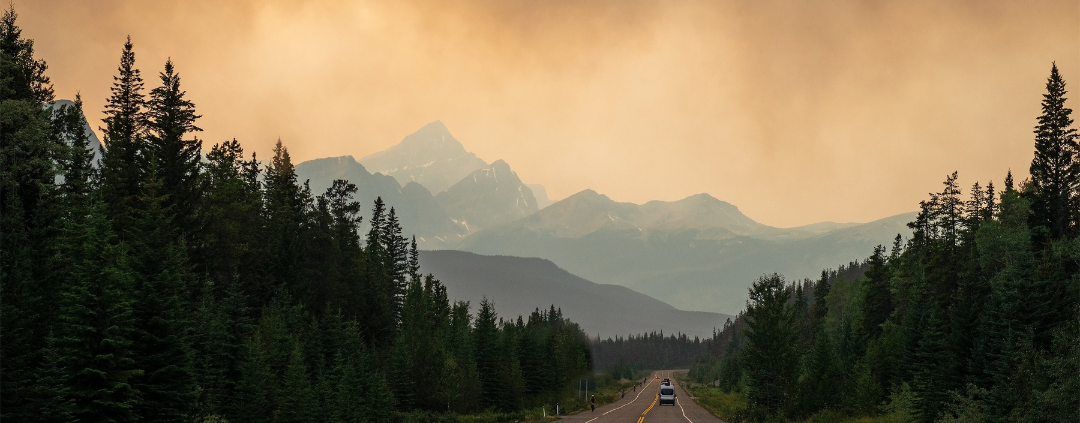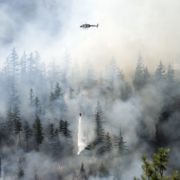The burning issue: wildfires and salmon
The 2024 wildfire season has already begun in British Columbia. The fire and drought impacts this summer will depend on how much rain falls throughout June, yet experts have predicted a long and dry fire season ahead.
Unfortunately, this is part of a broader trend.
Wildfires are becoming bigger and more frequent due to climate change, aggressive firefighting, historical fire exclusion, repression of Indigenous cultural burning, and human encroachment in wildlands, raising the stakes for salmon and their habitats.
Over time, Pacific salmon have long endured, and even benefitted from fires for millions of years, but the new scale and severity of wildfires is testing the limits of how readily salmon-bearing watersheds can naturally recover and sustain salmon and other aquatic species.
More than half of salmon populations are in some state of decline, and wildfires present yet another challenge salmon must confront.
Later this month, the Pacific Salmon Foundation (PSF) will be releasing a ‘Wildfire Playbook,’ a resource that strives to help prioritize landscape recovery strategies for salmon habitat following severe wildfires.
The Playbook provides technical recovery advice and encourages on-the-ground practitioners, including fisheries managers, government agencies, and all stakeholders to work together on post-wildfire recovery.

The upward trend of wildfires
Last year’s wildfire season was the most destructive in the province’s history. In 2023, wildfires burned a record-breaking 2.8 million hectares in British Columbia, far exceeding the yearly average of 30,000 hectares burned per year in the 1990s. These fires were distributed across the province but notable burns were concentrated in the northeastern corner of the province and the Interior.
This year’s active spring wildfires have already burned more than 320,000 hectares as of early-June 2024, more than doubling the total area burned in 2022 alone.
In recent years, fires of significant magnitude have occurred in major salmon-bearing watersheds, including: the Columbia, Fraser, and Stikine basins.
Between 1986 and 2022, more than 5,000 fires burned more than 7.7 million hectares within salmon-bearing watersheds in British Columbia and the Yukon.
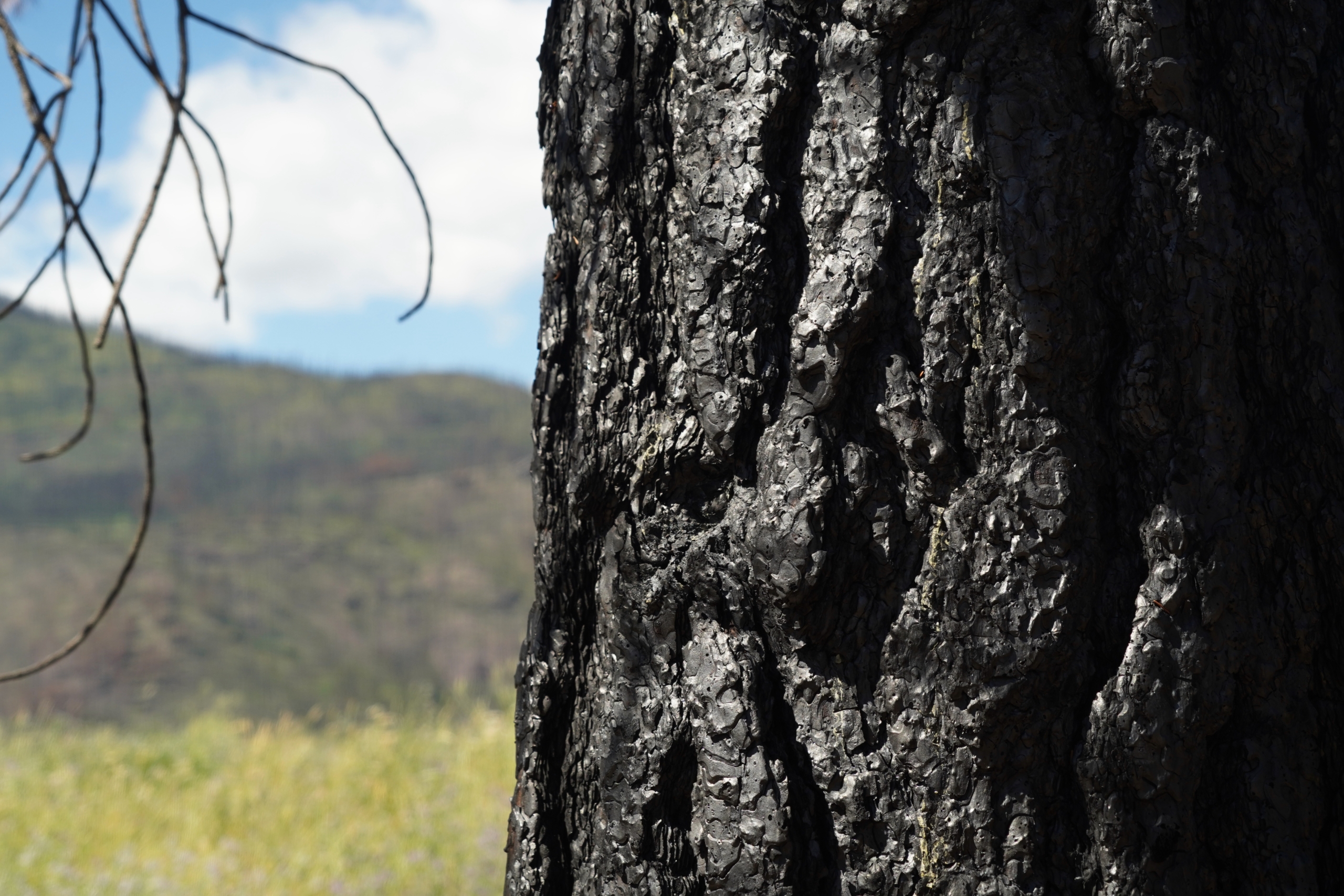
One example is the Elephant Hill Fire of 2017, which lasted for three months and burned 191,865 hectares in B.C.’s south-central Interior region.
A 2023 study from the University of British Columbia found that the Elephant Hill fire burned about half of the Bonaparte River watershed – which supports Chinook, coho, and pink salmon as well as steelhead. Of those, the Committee on the Status of Endangered Wildlife in Canada (COSEWIC) has assessed steelhead and Chinook as endangered, and coho as threatened.
The study also indicated that the fire widened the river up to 130 per cent – a process that can remove the complex habitat features like pools and side channels that salmon depend on – and increased the pace of erosion by 230 per cent.
The researchers monitored changes to the river over the course of multiple years as the greatest impacts of fire in a watershed are felt in the months to years following a fire.
How wildfires impact salmon
Fires can adversely impact salmon and their habitats in several ways.
- Wildfires can burn trees and reduce forest cover and vegetation, decreasing shading of streams and causing thermal stress for salmon. This is especially dangerous for eggs and juveniles.
- The loss of vegetation can increase runoff and erosion into rivers and streams, potentially leading to torrential floods, debris flows, altered freshet timing, river widening, and other hydrological issues.
- Increased erosion and sediment loads can disrupt the streambed, damage pools and other micro-habitats, suffocate redds or eggs, and smother food sources like aquatic insects.
- Fallen debris or trees into streams can obstruct fish passage and migrations, restricting habitat access.
- Contaminants such as ash, heavy metals, excess nutrients, and other toxicants can wash into river and lake ecosystems, elevating water pollution risks.
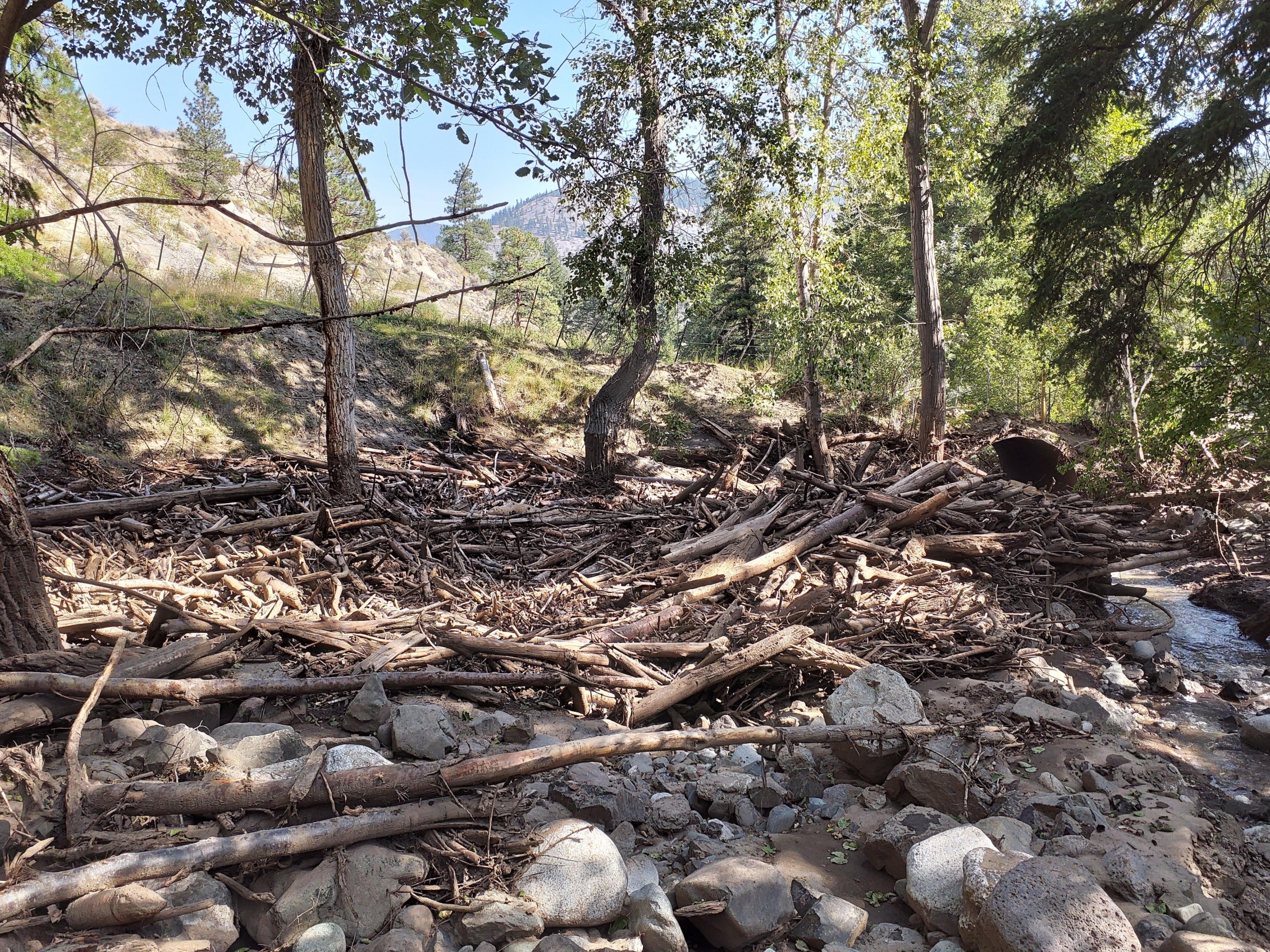
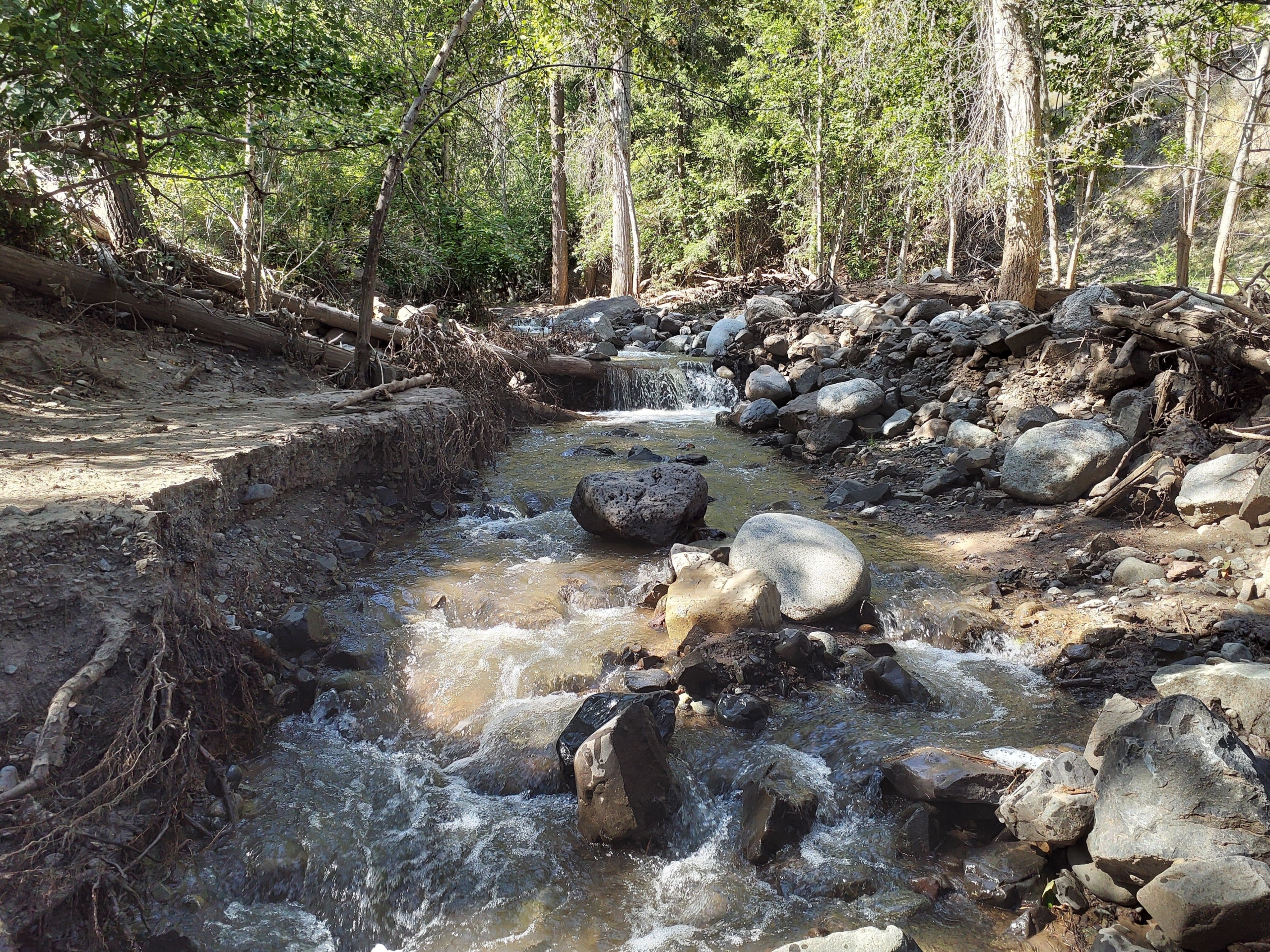
Erosion, sedimentation, lack of vegetation and elevated turbidity in Shackan Creek following B.C.’s 2021 wildfire season.
PSF’s Wildfire Playbook outlines restoration solutions to address these challenges, ranging from the use in-stream devices to limit erosion, straw mulching to stabilize burnt hillslopes, and active re-vegetation seeding of intensely burned riparian areas, among others.
At a high level, the Wildfire Playbook aims to integrate fisheries managers and other salmon and habitat practitioners into post-wildfire recovery conversations. It encourages collaboration on wildfire recovery and promotes the idea of a ‘watershed recovery community.’
This webpage will be updated with information related to the Wildfire Playbook.
The development of the Wildfire Playbook was supported by the British Columbia Salmon Restoration and Innovation Fund – a joint program from the Government of Canada and the Province of British Columbia.

